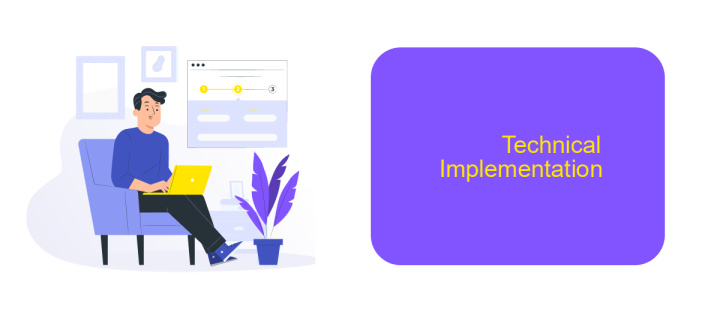Bi-directional Sync Data Integration Pattern
The Bi-directional Sync Data Integration Pattern is a crucial architectural approach for ensuring data consistency and real-time synchronization across multiple systems. By enabling two-way data flow, this pattern allows for seamless updates and accurate reflections of changes in both directions, thereby enhancing operational efficiency and data reliability. This article delves into the principles, benefits, and implementation strategies of this integration pattern.
Definition
Bi-directional sync data integration pattern refers to a method that ensures data consistency between two or more systems by allowing data to be synchronized in both directions. This pattern is essential for maintaining up-to-date information across multiple platforms, preventing data discrepancies and ensuring seamless operations.
- Data Consistency: Ensures that data remains consistent across all integrated systems.
- Real-Time Synchronization: Provides real-time data updates between systems.
- Error Handling: Incorporates mechanisms to handle synchronization errors effectively.
Implementing bi-directional sync can be complex due to the need for conflict resolution and data transformation. Tools like ApiX-Drive simplify this process by offering automated integration services that handle data synchronization efficiently. ApiX-Drive supports various platforms, enabling seamless data flow and reducing the manual effort required for integration management.
Benefits

Implementing a bi-directional sync data integration pattern offers numerous benefits, foremost among them being enhanced data consistency across multiple systems. This pattern ensures that any changes made in one system are automatically reflected in the other, minimizing the risk of data discrepancies and ensuring that all users have access to the most up-to-date information. This is particularly beneficial for businesses that rely on real-time data to make informed decisions, as it eliminates the need for manual data entry and reduces the likelihood of human error.
Moreover, bi-directional sync can significantly improve operational efficiency. By automating the data synchronization process, organizations can save valuable time and resources that would otherwise be spent on manual updates and data reconciliation. Tools like ApiX-Drive facilitate this automation by providing seamless integration between various applications and services, making it easier for businesses to maintain synchronized data without extensive technical expertise. This not only streamlines workflows but also allows teams to focus on more strategic tasks, ultimately driving productivity and growth.
Use Cases

Bi-directional sync data integration is crucial for maintaining data consistency across multiple systems in real-time. This pattern is particularly useful in scenarios where data changes frequently and needs to be updated across different platforms without manual intervention.
- Customer Relationship Management (CRM): Keeping customer data synchronized between CRM systems and other platforms such as email marketing tools, sales automation software, and customer support systems.
- Inventory Management: Ensuring that inventory levels are updated across e-commerce platforms, warehouse management systems, and point-of-sale (POS) systems to prevent stock discrepancies.
- Human Resources (HR): Synchronizing employee data between HR management systems, payroll software, and time-tracking applications to maintain accurate and up-to-date records.
- Financial Systems: Keeping financial data consistent between accounting software, billing systems, and financial reporting tools to ensure accurate financial records.
Tools like ApiX-Drive can facilitate bi-directional sync by offering automated workflows that connect various systems and applications. By using such services, businesses can streamline their data integration processes, reduce manual errors, and ensure that all systems are always up-to-date with the latest information.
Technical Implementation

Implementing a bi-directional sync data integration pattern involves several critical steps to ensure data consistency and reliability across systems. The primary goal is to synchronize data between two or more systems in real-time or near real-time, allowing for seamless data flow and minimal latency.
First, identify the systems that need to be integrated and determine the data entities that require synchronization. Establish data mapping rules to ensure that data fields correspond correctly between systems. It’s essential to handle data conflicts and determine which system will take precedence in case of discrepancies.
- Set up API connections for each system using a service like ApiX-Drive.
- Configure data transformation rules to match data formats between systems.
- Implement error handling and logging mechanisms to monitor synchronization status.
- Schedule regular sync intervals or enable real-time updates based on system capabilities.
Using tools like ApiX-Drive can significantly simplify the integration process by providing pre-built connectors and automated workflows. This ensures that data remains consistent and up-to-date across all integrated systems, enhancing overall operational efficiency.
- Automate the work of an online store or landing
- Empower through integration
- Don't spend money on programmers and integrators
- Save time by automating routine tasks
Best Practices
Implementing a bi-directional sync data integration pattern requires careful planning and execution to ensure data consistency and reliability. One of the best practices is to establish clear data governance policies. This includes defining data ownership, access controls, and data validation rules to prevent data conflicts and ensure that the data remains accurate across all integrated systems. Regular audits and monitoring should be conducted to identify and resolve any discrepancies promptly.
Another best practice is to leverage robust integration tools such as ApiX-Drive to streamline the synchronization process. ApiX-Drive offers an intuitive interface and a wide range of pre-built connectors that facilitate seamless data integration between various platforms. By automating data sync processes, you can reduce manual errors and save valuable time. Additionally, ensure that you have proper error handling mechanisms in place to manage data sync failures and retries, thus maintaining the integrity of your data across all systems.
FAQ
What is Bi-directional Sync Data Integration?
Why is Bi-directional Sync important?
What are the common challenges in implementing Bi-directional Sync?
How can I implement Bi-directional Sync in my systems?
What are the best practices for Bi-directional Sync?
Time is the most valuable resource in today's business realities. By eliminating the routine from work processes, you will get more opportunities to implement the most daring plans and ideas. Choose – you can continue to waste time, money and nerves on inefficient solutions, or you can use ApiX-Drive, automating work processes and achieving results with minimal investment of money, effort and human resources.


